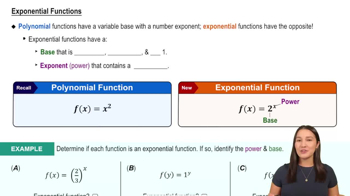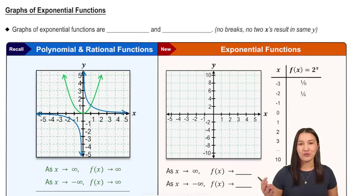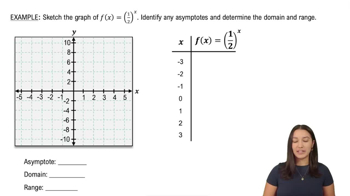Table of contents
- 0. Functions7h 52m
- Introduction to Functions16m
- Piecewise Functions10m
- Properties of Functions9m
- Common Functions1h 8m
- Transformations5m
- Combining Functions27m
- Exponent rules32m
- Exponential Functions28m
- Logarithmic Functions24m
- Properties of Logarithms34m
- Exponential & Logarithmic Equations35m
- Introduction to Trigonometric Functions38m
- Graphs of Trigonometric Functions44m
- Trigonometric Identities47m
- Inverse Trigonometric Functions48m
- 1. Limits and Continuity2h 2m
- 2. Intro to Derivatives1h 33m
- 3. Techniques of Differentiation3h 18m
- 4. Applications of Derivatives2h 38m
- 5. Graphical Applications of Derivatives6h 2m
- 6. Derivatives of Inverse, Exponential, & Logarithmic Functions2h 37m
- 7. Antiderivatives & Indefinite Integrals1h 26m
- 8. Definite Integrals4h 44m
- 9. Graphical Applications of Integrals2h 27m
- 10. Physics Applications of Integrals 3h 16m
- 11. Integrals of Inverse, Exponential, & Logarithmic Functions2h 34m
0. Functions
Exponential Functions
Struggling with Calculus?
Join thousands of students who trust us to help them ace their exams!Watch the first videoMultiple Choice
Determine if the function is an exponential function.
If so, identify the power & base, then evaluate for x=4 .
f(x)=(21)x
A
Exponential function, f(4)=161
B
Exponential function, f(4)=−16
C
Not an exponential function
 Verified step by step guidance
Verified step by step guidance1
First, understand what an exponential function is. An exponential function is of the form \( f(x) = a^x \), where \( a \) is a constant base and \( x \) is the exponent.
Examine the given function \( f(x) = \left( \frac{1}{2} \right)^x \). This matches the form of an exponential function, where the base \( a \) is \( \frac{1}{2} \) and the exponent is \( x \).
Since the function is an exponential function, identify the base and the power. Here, the base is \( \frac{1}{2} \) and the power is \( x \).
To evaluate the function for \( x = 4 \), substitute \( x = 4 \) into the function: \( f(4) = \left( \frac{1}{2} \right)^4 \).
Calculate \( \left( \frac{1}{2} \right)^4 \) by multiplying \( \frac{1}{2} \) by itself four times: \( \frac{1}{2} \times \frac{1}{2} \times \frac{1}{2} \times \frac{1}{2} \). This will give you the value of \( f(4) \).

 6:13m
6:13mWatch next
Master Exponential Functions with a bite sized video explanation from Callie
Start learning




